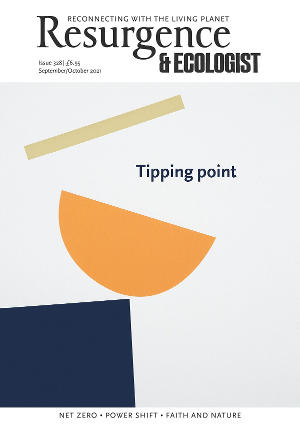I’m never happier than when the summer migrants are here. Swifts screaming over my house, swallows swooping for mud at the farm, and the house martins busy at their nests on my neighbour’s wall. I’m drawn to stories of summer, to transport me there, whatever the weather or season.
I hoped, therefore, that Stephen Rutt’s The Eternal Season: Ghosts of Summers Past, Present and Future would fill me with that eternal sunshine. I’ve read Rutt’s writing before, adoring the spare and light touch with dashes of humour; always both immediate and transporting.
In this book, Rutt takes us on a species-by-species picnic of an unfolding summer. It was also a summer like no other, for Rutt was writing about ‘that’ summer of 2020. Covid-19 prevented him from travelling across Britain’s woods and forests and following warblers, the intended focus of this book. I believe that despite the limitations of the situation, this led to writing that will deeply resonate with all of us who felt similarly trapped and turned to Nature for solace.
A Bedfordshire lockdown, away from home in Scotland, is the fertile backdrop for much of the book. It is a familiar landscape to me, and many of the species are significant from my life, reaching back into childhood memories and more recent ones too.
From childhood, the lapwings and cuckoos, those species who have slipped away from common to rare in the UK. And the incomers, the new and exciting, such as wasp spiders and egrets. Rutt brings them to life on the pages, weaving history with present challenges. He also helps me care about a few species that I’d not much bothered to ponder before, thinking them “birdy birders’ birds”, such as the wood warblers and the blackcaps. All the myriad species making up our complex web of ecology fit together in the tale of one summer.
It strikes me afresh that the role of a Nature writer is to tread a tightrope, or rather to take us on that tightrope with them. They must show us the marvel and wonder, but they must also tell us of the losses and risks in a world of climate chaos and habitat erosion. Too uplifting, and they’ve airbrushed; too depressing, and we might put the book down. Rutt treads that fine line just right – the tone is hopeful, nostalgic and poignant.
Rutt asks what happens when natural balances go wrong. When caterpillars hatch before baby birds, when birds sing at the wrong time, when migratory patterns are disrupted. In a year of our own disruption, there was the space to stop and really notice.
Lockdown led many people to spend more time in their local countryside and green spaces, perhaps also those who had never had reason or occasion before. It may have started because there was little else to do, but it brought connection with Nature for a wider range of people and gave us the chance to witness the changing seasons.
Rutt’s book is one individual’s intense look at a few months of the year. The next book brings a wider focus. Diversity of season, diversity of form and diversity of voice.
In Gifts of Gravity and Light: A Nature Almanac for the 21st Century, edited by Anita Roy and Pippa Marland, we have a collection of poetry and prose that explores spring, summer, autumn and winter through fourteen different voices. It’s an eclectic, joyful celebration of our natural world, taking us around the globe in an unexpected and constantly surprising way.
The natural world is the constant thread, yet it is somehow secondary to the human stories, to the social, cultural, political and deeply personal narratives. This is a human-centric approach, where migratory eels tell us about homesickness, and cherry blossom carries a deep human symbolism.
That the voices are predominantly female is cause for comment, and celebration. Nature writing has, typically although not exclusively, echoed historical ownership of land – largely in the gift of white, affluent males. The change I have witnessed in my decade or so of working in this area is significant, necessary and welcome. The book also tackles head-on the very current theme of women’s safety, and of how the countryside and freedom to explore it can feel out of bounds for women and girls.
Gifts of Gravity and Light goes further than redressing the gender imbalance. It also explores the way Nature is experienced by those who, for reasons of gender, ethnicity, sexuality, class, upbringing or disability, are not often seen or listened to.
Of course, throughout the stories, poems and accounts, we stumble again and again upon similar themes to Rutt’s work. Climate change and Covid-19 have been influential here too. Death and loss permeate some accounts, whilst others are joyful. I loved Alys Fowler’s secret path construction, as well as the gorgeous way she made me appreciate and contemplate mud. This is an utterly relevant and utterly modern read.
And so, two books bringing us what we have reached out for in the past year. Up-close-and-personal views of Nature that delight and engage, challenge and extend. Books that weave Nature into human experience, acknowledging the difficulties that both face. With this passion, with these important messages so particularly and beautifully put, I’m feeling more hopeful already.







